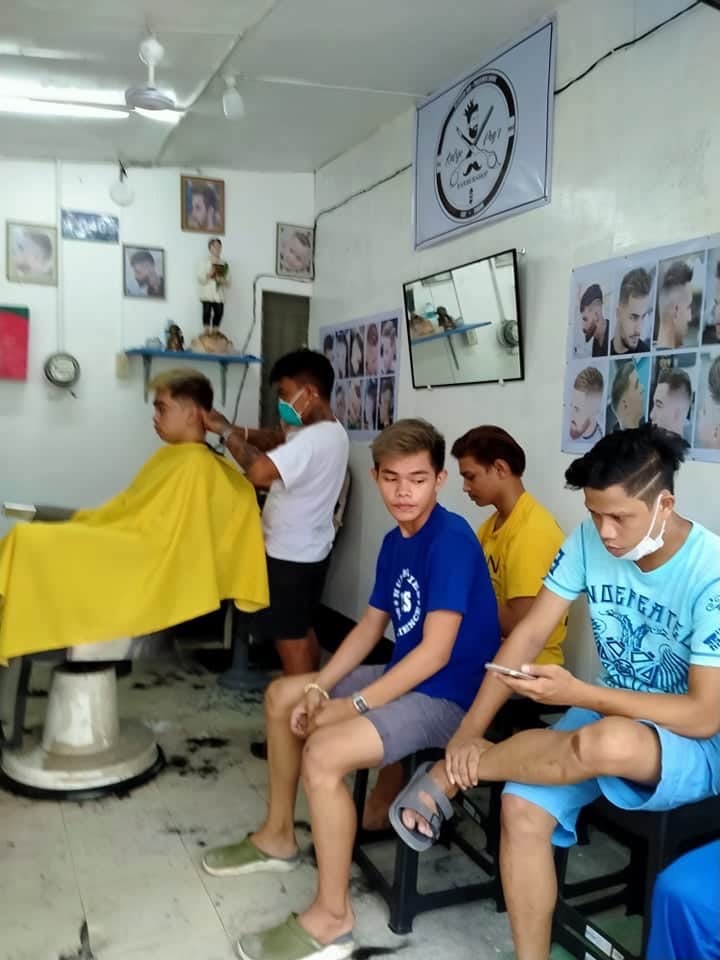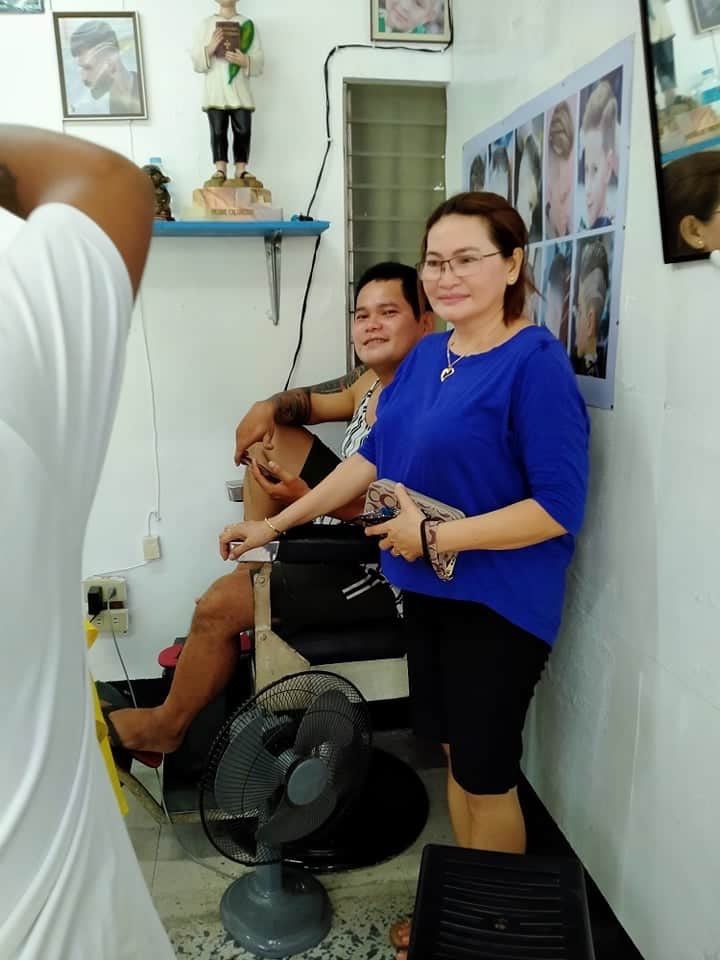Entrepreneurism is a much admired phenomenon for many in the west, and even universally: creating their own jobs and livelihood, struggling with adversity, the little person against the huge intimidating marketplace, the hard work and long hours, the desperate moms & pops just trying to keep it going and hoping to have something to retire on. Yes we admire entrepreneurism, until the entrepreneur becomes too big and too successful, then envy and resentment set in, a psychology as old as human existence I suppose. We prefer our noble entrepreneurs to be poor.
Entrepreneurism is highly dependent on a number of factors: creativity, hard work, stamina, risk tolerance (or blind faith), maybe luck. (I suppose I should say successful entrepreneurism depends on those factors; there are millions of examples of businesses that have failed for want of one or more of those factors, especially luck.) (I suppose I should also say, access to working capital helps too, often coming in the form of love money.)
Any self-employed person – any sole proprietor consultant – is an entrepreneur. Whether or not hugely successful they need to give themselves credit for their courage. I’m an entrepreneur, though perhaps of the not so successful variety. Maybe I self-denigrate. I have operated my own consulting business, AFS Consulting, for almost 30 years! – longest employer of my life. I managed to keep a family home together and put three kids through university, and raise champion standard poodles too. So that has to be considered some measure of success. But I never became wealthy, I never hired staff, never incorporated nor ipo’d. These days consultants typically fall into the SME category, Small and Medium-sized Enterprises. I’m an SME, very small. And in the last couple of years, getting smaller. (The proof of that is I didn’t qualify for the CEBA (Canada Emergency Benefit Account) in the midst of this pandemic lock-down – insufficient payroll and operating expenses.) I guess I don’t have enough of the pre-requisite factors – certainly I lack for love money, though not for high credit card balances. But since I don’t admit to being retired, and apparently am an entrepreneur (or perhaps merely a self-reliant crank), as my consulting business languished in those waning years I launched a second business: author and publisher.
Being an author doesn’t make you an entrepreneur. You also have to sell your books. Entrepreneurism is nothing without sales and revenue. Otherwise it is merely a hobby. Writing and [self-] publishing a book is not a real profession, merely, as one of my more tactful friends put it, a vanity project. So, ‘proof’ of being a successful author and publisher is sales, and enough sales to cover at least your operating costs; having enough net income to buy groceries, and maybe another bottle of Writers’ Tears, is a bonus. Having published Travels with Myself, and six books before that one, I can claim to be a writer, but the real test of entrepreneurism is getting people to buy my books. Before you can get sales you have to find buyers, or put another way, buyers have to find you. This is called marketing and promotion. And the ‘modern’ way to do that is promote it through the internet of things. (The ‘old’ way is to find a legitimate publisher who can get your books on retail shelves, but that is very hard to do, unless you are already a celebrity.) Advertising in major media would likely be more efficacious but the expense would be enormous.
I put together a marketing plan. I’ve even executed parts of it already. The easy parts. Updated my web page, updated my Facebook Pages and promoted the book there, posted a notice on LinkedIn. I even sent notices to my alumni magazines (Queen’s Alumni Review and Queen’s Smith Magazine)! I will post notices and updates on my two Twitter pages. And follow-up on Linked In and Facebook and Twitter. Get serious about notices on Instagram and build followership. Encourage people to subscribe to my blog. Repeat, repeat, repeat. Grow a thick skin – stop worrying about annoying all my friends.
One of the classic internet marketing stratagems is blogging and newsletters. But you have to find the right balance between attracting an appreciative audience and spamming. What you hope for is readers relaying your message to their networks, as I’m sure many of you have already. In the blog world you also might expand your reach by having other bloggers making referral links. I’ve had two of these requests (maybe more but I have a hard time distinguishing a genuine request from spam, and address thiefs).
One such request for a back-link came from an obscure source and by a curious route. Dale Garrett runs a quirky website about birds; he or his search engine found my blog post about mental health on Travels with Myself and he has a page extolling the anxiety-reducing effects of bird song. (He might also have found me through the Pilipiñas Packet post I did about birds at Qubo Qabana but apparently he wasn’t searching for birds.) Here’s the link to his site and from there you can find his post about anxiety: https://chipperbirds.com/
Another ‘researcher’ found me through another unlikely path: the chapter ‘Dating, Oh My’ in Travels With Myself in which I had referred to one of my dates being the owner of cotons de tulear. (I guess she wasn’t looking for the keyword ‘poodle’.) Jess Miller of Jen Reviews let me know they had just released a new publication on https://yourdogadvisor.com/ and hoped I would give them a back link. In turn they will backlink afspublishing.ca.
It looks as though my surrogate Filipino family is full of entrepreneurs. Or maybe they know that if they don’t create their own jobs they will likely be unemployed. While some of Carmen’s kids have ‘real jobs’ the most of them have created their own. Carmen’s daughter Celca runs a clothing store and promotes it through her own Facebook Page (Chandi Raketera[1]) – see, I just did that referral link thing. Celca’s husband operates a tricycle taxi (the number one mode of public transit in the Philippines); cousin Bobert operates a very big Jeepney bus (the number two form of public transit in Philippines); pamangkin Belinda also runs a clothing store in a tindahan marketplace. Carmen sustained herself for twenty years by selling roadside barbeque, selling Avon and fashion and beauty products. It is little wonder the family members have that entrepreneurial spirit. These young self-starters have what it takes to get into business for themselves: creativity, hard work, stamina, and maybe a little luck; they are however short of working capital – love money.
Covid-19 is a case of very bad luck. Many SMEs have collapsed because of quarantine restrictions – no work, no pay; no customers, no sales. But truly imaginative entrepreneurs look for new opportunity in the midst of calamity and start another income stream. Carmen’s son GR works for Globe Cellular but decided to start a restaurant/karaoke bar business as well – just before covid! (Timing is important in a business startup). Undeterred he and his wife, chef Myline, adapted their business to take-out and delivery of menu items. And now with easing of some quarantine restrictions he has identified another business opportunity: he opened a barber shop! GR is not a barber but Myline’s two brothers are – barbers without a shop. Capital Hills subdivision in Trece Martires has no local barber and travel outside the subdivision is restricted. So GR borrowed money from Mama Carmen, refitted Celca’s clothing store and hired the two barbers!



But wait, that’s not all. Inspired by her son, perhaps, or perhaps out of boredom from being locked down, Carmen herself has added a new product line for her own business, Infinite Dreams: instead of beauty products, of which in covid quarantine there is very little demand and very difficult supply!, she has identified a supply void in Capital Hills and is filling it. The traveling tindahan delivering filtered water was delivering a container of water to Carmen when she realized his delivery schedule was haphazard or on demand. She asked him if he would supply her with bottles at a wholesale price that she in turn would sell retail from her house in her neighbourhood. And sure enough the world has beaten a path to her door, or at least, her corner of the Capital Hills subdivision has. And now, after her first week, she has expanded her business line to other household necessities – cooking oil, detergent and dish detergent, alcohol (of the disinfectant kind!). The margins are low, very low, but it keeps the entrepreneur occupied.
Entrepreneurism means more than opening a business, or even having a better mousetrap, and a marketing plan. It requires that you have sales. And selling, constantly generating revenue, turns out to be the hardest part of running a business.
Marketing is knowing your market – who are your customers; you also need to know what is their elasticity of demand: What can you charge for the product you want to sell before you drive too many of your customers away? Or it’s opposite, how low can you price your product before you are no longer covering all your costs and making a decent return. Selling depends on many things, which we might leave for another post, but it does depend on having the right product at the right time and at the right price.
For GR, pricing his haircuts is a bit tricky, as is pricing most things I suppose. You need to know your costs of course, all your costs (salaries, rent, supplies, depreciation, financing – especially financing as GR’s financier is clearly a loan shark and charges usury rates of interest). He also has to make a best guess of sales volume: How many heads per week are likely to walk into the shop? There is certainly demand in Capital Hills after four months of quarantine but elasticity of demand is a function of price: GR’s barber shop may be the only game in town but if he charges too much people with little cash in their pockets will delay getting their hair cut or somehow find another source of supply, like home haircuts. He charges 60 pesos per cut. When I got my hair cut at fancy stylist shops in the big malls the price was 200 pesos and up depending on which additional services I might also be persuaded to have done. I think GR is charging too little: maybe 60 pesos for kids and 100 pesos for adults. But what do I know? GR seems to know what his market will bear.
And what do I know? – an obscure author trying to sell his products on-line – the black hole of retailing. Printing and shipping costs are largely out of my control and, as I reported earlier, so is Amazon’s discounting. These substantially drive the price I have to charge. Assuming I can even find my market niche full list price may be beyond my potential customers’ elasticity of demand. Sales are slow, or miniscule. Maybe I’m in the wrong business. Maybe I should think about vegetable oil.
Doug Jordan, Reporting to you from Kanata Ontario.
© Douglas Jordan & AFS Publishing All rights reserved. No part of these blogs and newsletters may be reproduced without the express permission of the author and/or the publisher, except upon payment of a small royalty, 5¢.
[1]About Chandi Raketera: It’s not a racketeering business! Raketera is Tagalog for sideline; Chandi is a contraction of Celca’s kids names, Charles and Andi.
